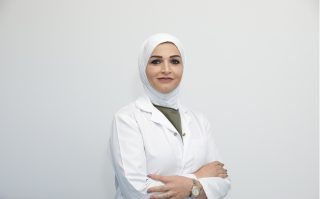Women and Cancer

Cancers are a large family of diseases that involve abnormal cell growth with the potential to invade or spread to other parts of the body.
Estimates are that in 2018, 18.1 million new cases of cancer and 9.6 million deaths occur globally. About 20% of males and 17% of females will get cancer at some point in time while 13% of males and 9% of females will die from it.
Some of the cancers that most often affect women are breast, colorectal, endometrial, lung, cervical, skin, and ovarian cancers
Breast cancer was the most common cancer in women worldwide, contributing 25.4% of the total number of new cases diagnosed in 2018. The top three – breast, colorectal and lung cancers – contributed 43.9% of all cancers (excluding non-melanoma skin cancer).
Breast cancer can occur at any age, but the risk goes up as you get older. Because of certain factors, some women may have a greater chance of having breast cancer than others. But every woman should know about the risks of breast cancer and what they can do to help lower their risk.
What you can do…
Finding breast cancer early – when it’s small, has not spread, and might be easier to treat – can help prevent deaths from the disease. Getting regular screening tests is the most reliable way to find breast cancer early.
The American Cancer Society recommends the following for women at average risk for breast cancer:
· Women ages 40 to 44 should have the choice to start yearly breast cancer screening with a mammogram (x-ray of the breast) if they wish to do so.
· Women age 45 to 54 should get a mammogram every year.
· Women 55 and older can switch to a mammogram every 2 years or can continue yearly screening.
· Screening should continue as long as a woman is in good health and is expected to live at least 10 more years.
All women should understand what to expect when getting a mammogram for breast cancer screening – what the test can and cannot do. They should also be familiar with how their breasts normally look and feel and report any changes to a health care provider right away.
Women at high risk for breast cancer – because of their family history, a genetic mutation, or other risk factors – should be screened with MRI along with a mammogram. Talk with a health care provider about your risk for breast cancer and the best screening plan for you
Cancer affects approximately 1 in 1,000 pregnant women. The most common cancers found during pregnancy are the same as the most common cancers found in non-pregnant women during childbearing ages: breast cancer, cervical cancer, leukemia, lymphoma, melanoma, ovarian cancer, and colorectal cancer.
Diagnosing new cancer in a pregnant woman is difficult, in part because any symptoms are commonly assumed to be a normal discomfort associated with pregnancy. As a result, cancer is typically discovered at a somewhat later stage than average.
What Else You Can Do to Help Reduce Your Cancer Risk
- Stay away from tobacco.
- Get to and stay at a healthy weight.
- Get moving with regular physical activity.
- Eat healthy with plenty of fruits and vegetables.
- Limit how much alcohol you drink (if you drink at all).
- Protect your skin.
- Know yourself, your family history, and your risks.
- Have regular check-ups and cancer screening tests.

By Dr. Maiasa Ali
Specialist OB/GYN

